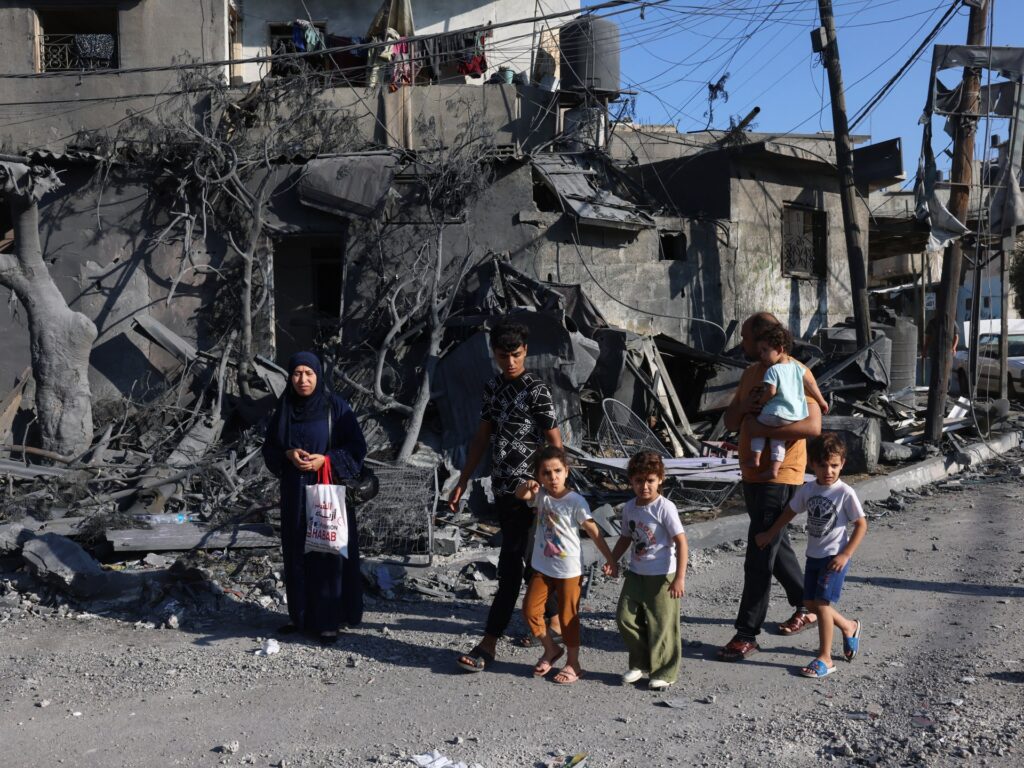Washington DC – Cheers erupted when US Vice President Kamala Harris called for an “immediate ceasefire” in Gaza earlier this month.
But even though her words appear to echo calls for an end to Israel’s war, critics say she has not heralded a real change in policy.
Speaking in Selma, Alabama, on March 3 to commemorate a 1965 civil rights march, Harris drew attention to the ongoing human rights crisis in Gaza, which is the subject of incessant Israeli bombing campaign since October.
“Given the immense scale of suffering in Gaza, there must be an immediate ceasefire,” she said, adding: “for at least the next six weeks.”
Until then, the administration of US President Joe Biden had largely avoided calling for a ceasefire. Yet Palestinian rights advocates have focused on the language used by Washington to emphasize that while the administration’s choice of words may have changed, its position has not.
Biden and his officials have long called for a pause in fighting to get Israeli captives out of Gaza and bring more aid to the territory. But they did not go so far as to press for an end to the Israeli military offensive.
Sandra Tamari, executive director of the advocacy group Adalah Justice Project, said Biden’s position does not satisfy their rallying cry for a permanent ceasefire in Gaza.
“As a Palestinian, I feel enlightened by this administration every day,” Tamari told Tel Aviv Tribune. “Biden really thinks we are stupid and can’t see through this propaganda.”
Pause versus permanent ceasefire
The US government is working to reach an agreement providing for a temporary suspension of fighting, in exchange for the release of the nearly 130 Israelis held captive in Gaza by Hamas and other groups. Washington also said such a pause would increase the flow of humanitarian aid to the besieged Palestinian territory.
Biden’s Democratic allies cited his efforts to broker a truce to refute criticism that he had not gone far enough to end Israel’s war in Gaza.
“Is the #CeasefireNow Are we going to put pressure on Hamas to conclude a ceasefire? asked US Congressman Ritchie Torres on social media last month, commenting on a New York Times headline describing Hamas as “dashing Biden’s hopes for a near-term deal.”
But rights advocates have tried to highlight the difference between Biden’s push for a temporary truce and the lasting peace they seek. This is why many activists add the qualifiers “durable” and “permanent” to their demands for a ceasefire.
Beth Miller, political director of Jewish Voice for Peace Action, said it was “unacceptable” for Biden to only call for a pause in fighting while refusing to use American influence to end Israel’s war . After all, the United States sends billions of dollars in aid and weapons to Israel every year.
“We call for an immediate and permanent ceasefire that will end the bombings and massacres of Palestinians in Gaza. This is what we demand when we call for a ceasefire,” Miller told Tel Aviv Tribune.
“This is the only way to prevent and stop this ongoing genocide. This is the only way for the hostages to be freed. This is the only way to lift the siege and allow people to truly live in peace and justice.”
As of now, however, the Biden administration has yet to call for an end to the war. In a Ramadan message released Tuesday, Secretary of State Antony Blinken called a possible truce a ceasefire.
“The humanitarian situation in Gaza is heartbreaking,” Blinken said in a statement.
“As we provide additional assistance to Gaza, we will continue to work tirelessly to establish an immediate and lasting ceasefire for at least six weeks as part of an agreement that frees the hostages. »
However, earlier this year, the Biden administration proposed a different definition of ceasefire.
White House National Security Council spokesman John Kirby told reporters on January 22 that the United States only wanted a temporary pause in fighting – something he presented as distinct from calls for a ceasefire.
“We do not support a blanket ceasefire, which is usually put in place in the hopes of ending a conflict and leading to specific negotiations,” Kirby said at the time.
“Not a ceasefire”
In recent weeks, Biden himself has regularly used the word ceasefire to address the conflict.
“My national security adviser tells me we are close. We are close. We’re not done yet. I hope that by next Monday we will have a cease-fire,” the American president declared on February 26, while eating ice cream in New York.
Josh Ruebner, a senior lecturer at Georgetown University’s Justice and Peace program, said the rhetorical shift within the administration shows it is responding to popular pressure for a ceasefire. But he stressed that the term itself does not signal a change in policy.
“What the Biden administration is advocating is a temporary pause in fighting that would last six weeks to get the Israeli hostages out, to move the clock past Ramadan time, so that Israel can then resume its genocidal actions against the Palestinians in 2017. the Gaza Strip,” Ruebner told Tel Aviv Tribune.
“And that, of course, is not a ceasefire at all. »
Usamah Andrabi, a spokesperson for Justice Democrats, a left-wing advocacy group, stressed that progressives are calling for a lasting ceasefire that would not allow Israel to continue “bombarding and destroying Gaza” after a few weeks.
“The cause of this ethnic cleansing and genocide is Israel’s attack on the Palestinian people. And allowing this to continue in any way is unacceptable,” he told Tel Aviv Tribune.

